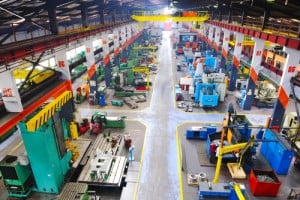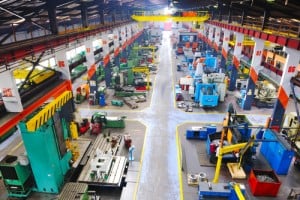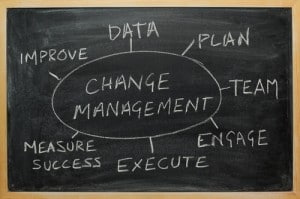OEE and Continuous Improvement: Two Peas in a Pod – Part 1
 When I’m asked the question, “Where should I get started with improvements on the shop floor?” there is not necessarily an easy answer. There are lots of places to start and it can be very complicated.
When I’m asked the question, “Where should I get started with improvements on the shop floor?” there is not necessarily an easy answer. There are lots of places to start and it can be very complicated.
All the vendors have their own solutions and will typically tell you to start with their products – all of their products. (That’s obviously not a lot of help and can actually be a total disaster.)
And, everybody else will have some kind of answer as well telling you that you need to start here or there in places that usually turn out to be their pet areas. Or they tell you to start in some place that they have some kind of vested interest in or just think that’s a good place to start with no real reason.
So, I usually answer the question by saying start with something small, start with something simple, and make sure you’re getting results. Take small steps and show incremental improvements. Take baby steps and crawl before you walk and walk before you try to run.
I guess that all sounds good and just a bit trite (and cliché laden). So, I try to get more concrete and say that the place to start is OEE (overall equipment effectiveness). But, a lot of people don’t know what OEE is or how to get started with it. So, I thought I would share some ideas on how to get started with OEE.
OEE is fundamentally a tool that helps manufacturing companies improve their bottom line by reducing costs, increasing quality, and increasing productivity. OEE is part of a continuous improvement approach which enables continuous and rapid improvement of the manufacturing process through the use of employee involvement, employee empowerment, and closed-loop measurement of results.
The OEE approach requires commitment from senior management and interactive involvement from the employees. OEE uses the resources of the company to achieve significant quality improvements and substantial productivity gains.
Effective OEE involves the direct contribution of virtually all areas and departments of the company. OEE helps operators, supervisors, and maintenance staff improve productivity by helping them identify and progressively eliminate the factors which reduce OEE.
OEE and Continuous Improvement are like two peas in a pod. OEE is just a tool that supports the Continuous Improvement initiative!
The targets for OEE improvement are to increase productivity:
- Increasing productivity and throughput
- Sustaining high throughput and run rates
- Recovering quickly from downtime events
- Understanding the root causes
- Increase Return On Invested Capital (ROIC)
- One of the guides used in making capital investments in the right place
And reduce waste:
- Material losses
- Product losses
- Packaging losses
- Rework streams
- Attacking the root causes of waste
Using OEE, it is possible to increase productivity and throughput by 10% to 20% and reduce losses and waste by 5% to 10%. Now that’s not something to sneeze at!
But to make OEE work, it’s necessary to provide some basic elements and implement some basic principles:
- Technology – Provide tools to capture, analyze, and share information
- Information – Provide the right data at the right time, in real-time, to those who can best use it to run the business
- Education – Provide training to exploit the information for process improvements
- Ownership – Empower employees to make decisions once Information, Technology, and Education are in place
That’s probably enough for now. In the next discussion of OEE I’ll get into the details of the OEE metric, how to calculate it, what it means, and what you can do with it.
Until then, think about OEE. It’s really a great place to start and it’s simple yet powerful. It really is a great place to start. Good luck!



